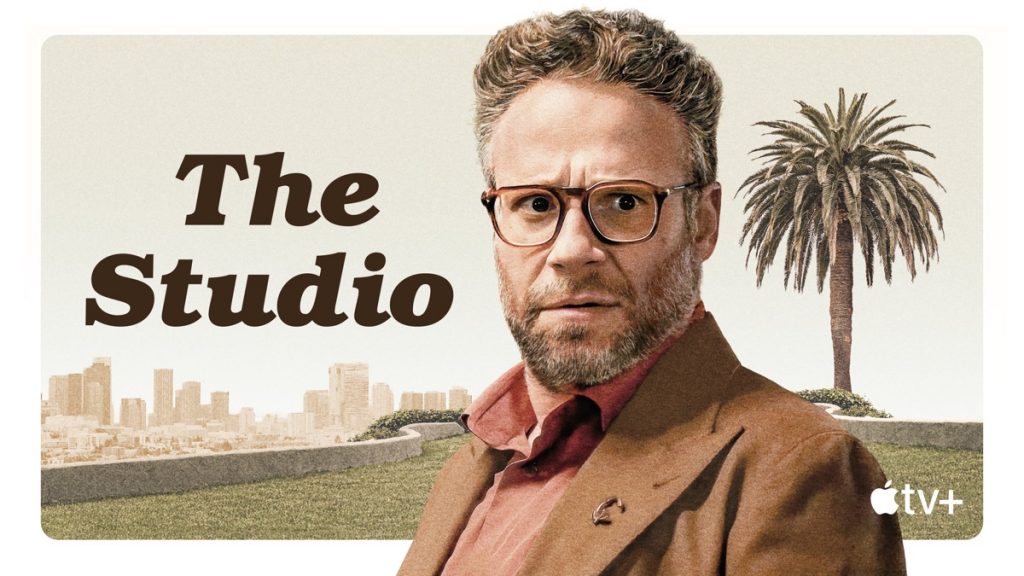How Screenwriters Can Navigate Today’s “Safe But Weird” TV Landscape

Currently, the television industry finds itself in a creative paradox: everyone says they want something new and exciting, but very few want to be the first to bet on it. For screenwriters, this creates a contradictory terrain to navigate. Are networks actually taking more risks, or just talking about it in press releases? Should writers be daring in their writing or not?
The answer is nuanced. Traditional television audiences have grown bored with current offerings of same old TV. They are moving to different formats and smaller screens. Although TV audiences are declining, they will return – but only if we give them a good reason to.
Networks and streamers are indeed making room for weirder, more unconventional storytelling—but only if it’s packaged with strategy, vision, and market appeal to contain the weirdness. Alternatively, smaller shows can be made with smaller budgets.
Risk-taking is not dead in television, but it has become more calculated, more selective, and more platform-specific. If you’re a screenwriter looking to push boundaries, understanding where and how the industry is willing to invest can be the difference between a sold TV pilot and an ignored pitch.
Calculated Risks, Not Blind Bets
Let’s get one thing clear; networks are not in the business of gambling. Every decision is weighed through a lens of ROI, potential brand synergy, and audience metrics. But that doesn’t mean there’s no room for boldness. Creative safety isn’t the golden ticket it once was. Television is increasingly run by marketing departments and corporate executives than creatives. But it’s not all doom and gloom. Traditional TV has boxed itself into a corner and needs to change.
Take shows like Beef (Netflix), Severance (Apple TV+) or The Curse (Showtime/Paramount+). These weren’t “safe” in the traditional sense—they were tonally strange, genre-bending, and thematically complex. But they had strong creative teams, recognizable talent, and a clear vision that felt distinct to make audiences feel safe. In other words, they were strategic risks. Limited series like Adolescence (Netflix) is a case of the little show that could made by a group of relative unknowns.

Photo courtesy of Netflix
The industry is open to edgy or left-field material—but not unless it comes with built-in audiences or other risk-mitigating mechanism. That confidence can come in the form of:
- A name-brand creator
- Viral source material (e.g., a hit podcast or short film)
- A popular magazine article
- A proof-of-concept trailer or pilot
- Previous festival/ online buzz
Note that this list doesn’t contain New York Times Best Seller. Established IP still plays an essential role in greenlighting decisions, but it’s not the be all and end all. A good book might not necessarily translate into a good television series and bring its audiences across. Audiences are fatigued with this predictable pipeline and what something to excite them.
It’s not enough to have a fresh idea. You need to prove (or argue) that your fresh idea has legs—and can run fast over the finish line. Being edgy might do the trick and invite audiences to log in.
Risk in Form, Not in Function
There’s a reason so many “risky” shows follow a familiar structural formula underneath the surface. While networks may greenlight projects that explore heavy themes (mental illness, grief, class disparity) or play with genre (sci-fi noir, satirical horror), they’re still looking for material with a hook, a clear narrative spine, and relatable characters.
Put differently, you can get weird with how you tell the story, as long as what you’re telling feels marketable and familiar. Executives call this: “Same, but different.”
This is especially important for emerging writers. If you’re not yet an established screenwriter, the best way to break through with something risky is to anchor it in an accessible structure. That could mean:
- A murder mystery with an unusual POV or narrative structure
- A romantic comedy that plays with time and place
- A family drama with supernatural undertones
- A non-linear narrative where episodes can be viewed in any order
- A traditional narrative with a live online commentary.
The innovation should come in the details, not at the expense of clarity. Pitch decks still need to answer the core executive questions: “Who is this for?”, “Why now?”, and “How do we sell it?”
New Voices Are Welcome—With Guardrails
There’s a genuine push across the industry to find and uplift underrepresented voices. Writers of color, LGBTQ+ writers, writers with disabilities—these voices are in demand, and buyers are aware that stories told from new perspectives can deliver fresh, content without being too earnest or only targetting these groups.
However, this openness often comes with a caveat: new voices are paired with experienced teams to ensure the production process stays on track.
Studios want the PR win of discovering the next great writer/ director—but without risking millions on someone unproven. That’s why it’s common to see first-time creators attached to veteran showrunners or to production companies that can “supervise” the creative process. Executives are in the “risk-minimization” business. Ideally they want a sure thing.
If you’re a newer writer, don’t let this discourage you.
- Seek out mentorships or partnerships with established creatives.
- Align your project with a production company known for nurturing new talent
- Build credibility through fellowships, labs, writers’groups, or short-form work that demonstrates you can execute.
- The more trust you can build—through reputation, collaborators, or track record—the more likely your “risky” story is to get a shot at being made.
Risk Appetite Varies Wildly by Platform
Not all platforms are created equal when it comes to taking risks. Here’s a quick breakdown of where things currently stand:
HBO/ FX: Still the gold standard for risk-tolerant storytelling. These networks have always embraced tone-forward, auteur-driven, bold and courageous work. If you have a unique voice and a strong creative team, this is your hub. Think Atlanta, Succession, The Sympathizer.
Apple TV+: The prestige streamer with money to burn and a taste for thoughtful, often high-concept material. They want to be taken seriously and are willing to take expensive swings—as long as it aligns with their brand of elevated, emotionally intelligent content (Severance, The Studio, For All Mankind).

Photo courtesy of Apple TV+
Netflix/ Amazon: More metrics-driven than ever. Netflix might greenlight something quirky if it promises strong international appeal or virality, but they’ll cancel fast if it doesn’t perform. Amazon loves genre, especially sci-fi and fantasy, but leans franchise-first. Risks must be accompanied by clear analytics or brand potential.
Hulu/ Peacock /Paramount+: Middle-ground buyers. They want breakout shows, but still rely on traditional TV structures. Slightly more cautious than HBO, but more open than broadcast television.
Broadcast Networks (ABC, NBC, CBS, Fox): Still the most risk-averse segment. Procedurals, family comedies, and “issue-of-the-week” dramas dominate here. But even these platforms are experimenting to stay relevant – and afloat. A comedy with an unusual protagonist or a slightly darker tone might sneak in if the core format is familiar.
What This Means for Screenwriters
If you’re trying to sell a project in this climate, here’s the bottom line: networks aren’t afraid of weird—they’re afraid of unproven and unclear talent.
How do you position your script as a “smart risk” instead of a red flag?
Frame your boldness in market-friendly terms: “It’s The White Lotus meets Black Mirror” is an easier sell than “It’s a nonlinear exploration of trauma told through interpretive dance.”
Build a portfolio, not just a passion project: The more solid samples you have, the more a buyer can trust that your risk-taking isn’t reckless.
Package smartly: A bold script with a known director or producing partner attached is 10x more likely to get traction.
Don’t chase weird for weird’s sake: Make sure the risks you’re taking serve the emotional or thematic core of your story. Audiences connect with boldness that feels earned—not novelty for novelty’s sake. We still want to celebrate our combined humanity.
Final Thoughts: Daring Is Welcome—But Deliver
Risk-taking is alive and well—but it’s undergone a transformation. Where once “risky” meant unpredictable with money to burn, now it means purposeful, well-packaged, and audience-aware.
As a screenwriter, your job is to know the difference between a stab in the dark and creative confidence. Networks want to be surprised—but on their terms. That means if you’re going to break the rules, you better know them inside and out first.
So go ahead—write the thing that scares you. Be brave. Pitch the idea no one’s done before. But do it with clarity, craft, humanity and a keen sense of where the industry is willing to bet big. Everyone loves good characters!
Great stories start with great feedback. Let’s get your film or TV script ready for the spotlight!
Join the Discussion!
Related Articles
Browse our Videos for Sale
[woocommerce_products_carousel_all_in_one template="compact.css" all_items="88" show_only="id" products="" ordering="random" categories="115" tags="" show_title="false" show_description="false" allow_shortcodes="false" show_price="false" show_category="false" show_tags="false" show_add_to_cart_button="false" show_more_button="false" show_more_items_button="false" show_featured_image="true" image_source="thumbnail" image_height="100" image_width="100" items_to_show_mobiles="3" items_to_show_tablets="6" items_to_show="6" slide_by="1" margin="0" loop="true" stop_on_hover="true" auto_play="true" auto_play_timeout="1200" auto_play_speed="1600" nav="false" nav_speed="800" dots="false" dots_speed="800" lazy_load="false" mouse_drag="true" mouse_wheel="true" touch_drag="true" easing="linear" auto_height="true"]










You must be logged in to post a comment Login